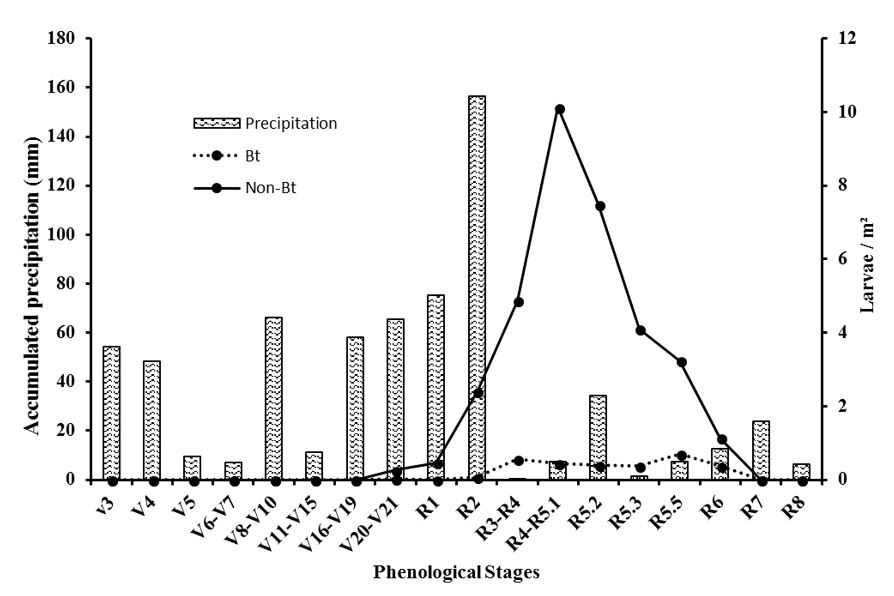Abstract
The use of GMO expressing Bt toxin in soybean production has increased significantly in the last years in Brazil in order to manage the damage caused by lepidopteran pests. In this study, we compared the richness and abundance of owlet moths (Noctuoidea) associated with Bt and non-Bt soybean. We determined the temporal variations as a function of phenology, and correlated the population variations of the most common species with meteorological variables. The research was conducted at the experimental area of Embrapa Cerrados. The collection method used was differentiated being suppressive and absolute. A total of 13 species were collected, of which eight occurred on Bt soybeans. The most representative taxa were Chrysodeixis includens (72.87%), Anticarsia gemmatalis (18.17%) and Spodoptera spp (5.22%). The number of larvae belonging to species targeted by the Bt technology was 10 times lower on Bt than on non-Bt soybeans. Utetheisa ornatrix and Elaphria deltoides were recorded on soybean for the first time, observing larvae of both species in non-Bt soybean and those of U. ornatrix also in Bt soybean. Only A. gemmatalis larvae correlated (p <0.05) negatively with precipitation. This study provided field information on the abundance and species richness of owlet moths on non-Bt soybeans, associated with the effects of Bt soybean. When considering the different levels of infestation between cultivars as a criterion, larvae monitoring is of substantial importance in order to develop the lost control program.
Keywords:
Anticarsia gemmatalis; Chrysodeixis includens; Cry1Ac toxin; Spodoptera spp

 Thumbnail
Thumbnail
 Thumbnail
Thumbnail

